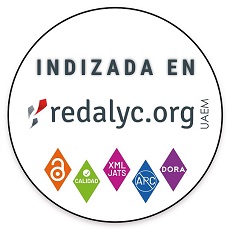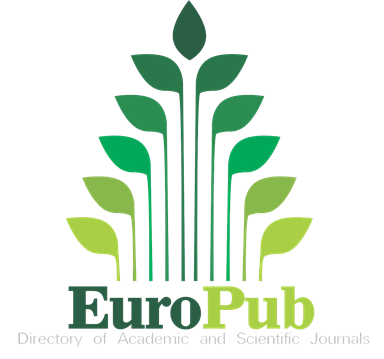Selection of Myrciaria dubia clones under conditions of the savanna/forest transition of Roraima through multivariate analysis
Selección de clones de Myrciaria dubia en condiciones de transición sabana/bosque en Roraima mediante análisis multivariado
DOI:
https://doi.org/10.15446/agron.colomb.v40n1.100319Keywords:
clonal tests, domestication, genetic improvement, camu-camu, native fruit (en)pruebas clonales, domesticación, mejoramiento genético, camu-camu, fruta nativa (es)
Downloads
Camu-camu (Myrciaria dubia), a fruit from the Amazon region, has received attention due to its high content of antioxidant compounds such as ascorbic acid and polyphenols. This study’s objective was to select camu-camu clones according to their morphological characteristics using multivariate analyses. We evaluated 56 camu-camu clones distributed in three blocks with two plants per experimental plot. The variables measured were plant height (H), number of basal branches (NBB), number of terminal buds (NTB), basal stem diameter (BSD), chlorophylls a (Chl a) and b (Chl b), and total chlorophyll (Chl a + b). Principal component (PCA) and multivariate clustering analyses were performed using the average linkage mean and Mahalanobis distance algorithms. After 24 months, results showed that the characteristic that least contributed to clone selection was NBB. The plant height (H), number of terminal buds (NTB), basal stem diameter (BSD), chlorophylls a (Chl a) and b (Chl b), and total chlorophyll (Chl a + b) had the most positive contribution towards the initial selection of camu-camu clones at two years of age. The 22 camu-camu clones showed the highest rate of vegetative development or vegetative quality index (VQI) in the transitional savanna/forest area of the northern Amazon, Brazil, after two years of transplanting.
El camu-camu (Myrciaria dubia) es una fruta de la región amazónica que ha recibido atención debido a su alto contenido de compuestos antioxidantes, como el ácido ascórbico y los polifenoles. El objetivo del estudio fue seleccionar clones de camu-camu según sus características morfológicas mediante análisis multivariados. Se evaluaron 56 clones de camu-camu distribuidos en tres bloques con dos plantas por parcela experimental. Las variables medidas fueron altura de la planta (H), número de ramas basales (NRB), número de brotes terminales (NBT), diámetro basal del tallo (DT), clorofila a (Chl a) y b (Chl b) y clorofila total (Chl a + b). Los análisis de agrupamiento de componentes principales (PCA) y multivariados se realizaron utilizando la media de enlace y los algoritmos de distancia de Mahalanobis. Después de 24 meses, los resultados mostraron que la característica que menos contribuyó a la selección del clon fue el NRB. La altura de la planta, número de ramas basales (NRB), diámetro basal del tallo (DBT), clorofila a (Chl a) y b (Chl b) y clorofila total (Chl a + b) tuvieron la contribución más positiva hacia la selección inicial de clones de camu-camu a los dos años de edad. Veintidós clones de camu-camu presentaron la mayor tasa de desarrollo vegetativo o índice de calidad de la vegetación (ICV) en la sabana de transición/área forestal del norte del Amazonas, Brasil, después de dos años de trasplante.
References
Abanto, C., Sánchez Choy, J., Saldaña, W., Paifa, M., & Chagas, E. A. (2011). Effect of pruning height on the architecture of plants of camu camu (Myrciaria dubia HBK Mc Vaugh) in the experimental station of IIAP, Ucayali, Peru. Scientia Agropecuaria, 2(2), 73–81. DOI: https://doi.org/10.17268/sci.agropecu.2011.02.02
Abanto, C. R., Chagas, E. A., Sánchez-Choy, J., dos Santos, V. A., Bardales, R. M. L., & Saldaña, G. R. (2014). Capacidad de enraizamiento de plantas matrices promisorias de Myrciaria dubia (Kunth) Mc Vaugh en cámaras de subirrigación. Revista Ceres, 61(1), 134–140. https://doi.org/10.1590/S0034-737X2014000100018 DOI: https://doi.org/10.1590/S0034-737X2014000100018
Abanto-Rodríguez, C., Alves-Chagas, E., Costa Silveira de Albuquerque, T., Tadashi-Sakazaki, R., Farias-Araújo, W., & Silva-Chaves, J. (2016). Early growth of camu-camu plants with nitrogen fertilization through fertirrigation. Scientia Agropecuaria, 7(4), 367–376. https://doi.org/10.17268/sci.agropecu.2016.04.02 DOI: https://doi.org/10.17268/sci.agropecu.2016.04.02
Alvarado, L., Vértiz, R., Jiménez, J. R., Borjas, R., Castro, V., & Julca, A. (2016). Caracterización agronómica de 95 accesiones en el banco de germoplasma de café en Chanchamayo (Perú). Revista ECIPerú, 14(1), 41–49. https://doi.org/10.33017/RevECIPeru2017.0004/ DOI: https://doi.org/10.33017/RevECIPeru2017.0004/
Alves, R. M., Garcia, A. A. F., Cruz, E. D., & Figueira, A. (2003). Seleção de descritores botânico-agronômicos para caracterização de germoplasma de cupuaçuzeiro. Pesquisa Agropecuária Brasileira, 38(7), 807–818. https://doi.org/10.1590/S0100-204X2003000700004 DOI: https://doi.org/10.1590/S0100-204X2003000700004
Araújo, D. G., Carvalho, S. P., & Alves, R. M. (2002). Divergência genética entre clones de cupuaçuzeiro (Theobroma grandiflorum Willd. ex Spreng. Schum.). Ciência e Agrotecnologia, 26(1), 13–21.
Chagas, E. A., Lozano, R. M. B., Chagas, P. C., Bacelar-Lima, C. G., Garcia, M. I. R., Oliveira, J. V., Souza, O. M., Morais, B. S., & Araújo, M. C. R. (2015). Intraspecific variability of camu-camu fruit in native populations of northern Amazonia. Crop Breeding and Applied Biotechnology, 15(4), 265–271. https://doi.org/10.1590/1984-70332015v15n4a44 DOI: https://doi.org/10.1590/1984-70332015v15n4a44
Chirinos, R., Galarza, J., Betalleluz-Pallardet, I., Pedreschi, R., & Campos, D. (2010). Antioxidant compounds and antioxidant capacity of Peruvian camu-camu ([Myrciaria dubia (Kunth) McVaugh] (H.B.K.) McVaugh) fruit at different maturity stages. Food Chemistry, 120(4), 1019–1024. https://doi.org/10.1016/j.foodchem.2009.11.041 DOI: https://doi.org/10.1016/j.foodchem.2009.11.041
Cliff, N. (1998). The eingenvalues-greater-than one rule and the reliability of components. Psychological Bulletin, 103(2), 276–279. https://doi.org/10.1037/0033-2909.103.2.276 DOI: https://doi.org/10.1037/0033-2909.103.2.276
Colodetti, T. V., Rodrigues, W. N., Martins, L. D., & Tomaz, M. A. (2014). Differential tolerance between genotypes of conilon coffee (Coffea canephora) to low availability of nitrogen in the soil. Australian Journal of Crop Science, 8(12), 1648–1657.
Costa, R. B., Resende, M. D. V., Contini, A. Z., Rego, F. L. H., Roa, R. A. R., Martins, W. J. (2005). Avaliação genética de indivíduos de erva-mate (Ilex paraguariensis A. St.-Hil.) na região de Caarapó, MS, pelo procedimento REML/BLUP. Ciência Florestal, 15(4), 371–376. https://doi.org/10.5902/198050981874 DOI: https://doi.org/10.5902/198050981874
Cruz, C. D., Ferreira, F. M., & Pessoni, L. A. (2011). Biometria aplicada ao estudo da diversidade genética. (1st ed.). Universidade Federal de Viçosa.
Cruz, C. D., Regazzi, A. J., & Carneiro, P. C. S. (2012). Modelos biométricos aplicados ao melhoramento genético. (3rd ed.). Universidade Federal de Viçosa.
Faleiro, F. G., & Junqueira, N. T. V. (2011). Recursos genéticos: conservação, caracterização e uso. In F. G. Faleiro, S. R. M. Andrade, & F. B. Reis Júnior (Eds.), Biotecnologia: estado da arte e aplicações na agropecuária. (1st ed., pp. 513–551). Planaltina, DF: Embrapa Cerrados.
Fidelis, M., Oliveira, S. M., Santos, J. S., Escher, G. B., Rocha, R. S., Cruz, A. G., Carmo, M. A. V., Azevedo, L., Kaneshima, T., Oh, W. Y., Shahidi, F., & Granato, D. (2020). From by product to a functional ingredient: Camu-camu (Myrciaria dubia) seed extract as an antioxidant agent in a yogurt model. Journal of Dairy Science, 103(2), 1131–1140. https://doi.org/10.3168/jds.2019-17173 DOI: https://doi.org/10.3168/jds.2019-17173
Fracassetti, D., Costa, C., Moulay, L., & Tomás-Barberán, F. A. (2013). Ellagic acid derivatives, ellagitannins, proanthocyanidins and other phenolics, vitamin C and antioxidant capacity of two powder products from camu-camu fruit (Myrciaria dubia). Food Chemistry, 139(1–4), 578–588. https://doi.org/10.1016/j.foodchem.2013.01.121 DOI: https://doi.org/10.1016/j.foodchem.2013.01.121
Freitas, D. A. F., Silva, M. L. N., Cardoso, E. L., & Curi, N. (2012). Índices de qualidade do solo sob diferentes sistemas de uso e manejo florestal e cerrado nativo adjacente. Revista Ciência Agronómica, 43(3), 417–428. https://doi.org/10.1590/S1806-66902012000300002 DOI: https://doi.org/10.1590/S1806-66902012000300002
Grigio, M. L., Moura, E. A., Carvalho, G. F., Zanchetta, J. J., Chagas, P. C., Chagas, E. A., & Durigan, M. F. B. (2021). Nutraceutical potential, qualitative and acceptability of different camu-camu popsicle. Journal of Food Processing and Preservation, 45(3), Article e 15305. https://doi.org/10.1111/jfpp.15305 DOI: https://doi.org/10.1111/jfpp.15305
Islam, K. R., & Weil, R. R. (2000). Soil quality indicators properties in mid-Atlantic soils as influenced by conservation management. Journal of Soil and Water Conservation, 55(1), 69–78.
Jolliffe, I. T. (1972). Discarding variables in a Principal Component Analysis. I: Artificial data, Journal of the Royal Statistical Society Series C (Applied Statistics), 21(2), 160–173. https://doi.org/10.2307/2346488 DOI: https://doi.org/10.2307/2346488
Karlen, D. L., & Stott, D. E. A. (1994). A framework for evaluating physics and chemical indicators of soil quality. In J. W. Doran, D. C. Coleman, D. F. Berdicek, & B. A. Stewart (Eds.), Defining soil quality for a sustainable environment. Madison. SSSA Special Publications. https://doi.org/10.2136/sssaspecpub35.c4 DOI: https://doi.org/10.2136/sssaspecpub35.c4
Larcher, W. (2004). Ecofisiologia vegetal, Rima, São Carlos, São Paulo-SP.
Mardia, K. V., Kent, J. T., & Bibby, J. M. (1979). Multivariate analysis, (1st ed.). Academic Press.
Martel, J. H. I., Ferraudo, A. S., Môro, J. R., & Perecin, D. (2003). Estatística multivariada na discriminação de raças amazônicas de pupunheiras (Bactris gasipaes Kunth) em Manaus (Brasil). Revista Brasileira de Fruticultura, 25(1), 1–9. https://doi.org/10.1590/S0100-29452003000100033 DOI: https://doi.org/10.1590/S0100-29452003000100033
Melo Filho, J. F., Souza, A. L. V., & Souza, L. S. (2007). Determinação do índice de qualidade subsuperficial em um Latossolo Amarelo Coeso dos Tabuleiros Costeiros, sob floresta natural. Revista Brasileira de Ciência do Solo, 31(6), 1599–1608. https://doi.org/10.1590/S0100-06832007000600036 DOI: https://doi.org/10.1590/S0100-06832007000600036
Mourão, M., Xaud, M. R., Xaud, H. A. M., Moura Neto, M. A., Arco-Verde, M. F., Pereira, P. R. V. S., & Tonini, H. (2003). Precipitação pluviométrica em áreas de transição savana-mata de Roraima: campos experimentais Serra da Prata e Confiança (Embrapa-Comunicado Técnico No. 54). Embrapa. https://ainfo.cnptia.embrapa.br/digital/bitstream/item/176104/1/cot01703-precipitathOoConf-moises.pdf
Rodrigues, T. E., Gama, J. R. N. F., Rêgo, R. S., Lima, A. A. C., da Silva, J. M. L., & Barreto, W. O. (2000). Caracterização e classificação dos solos do Campo Experimental de Água Boa – Embrapa Roraima, Boa Vista. (Embrapa-Publication No. 54). Embrapa Amazônia Orienta. https://ainfo.cnptia.embrapa.br/digital/bitstream/item/63264/1/Oriental-Doc54.pdf
Santos, V. S., Martins Filho, S., & Alves, R. M. (2014). Aplicação da PCAM e da análise de agrupamento em clones de cupuaçuzeiro. Revista da Estatística, UFOP, 3, 192–196.
Souza, H. G., Doria, K. M. A. B. V. S., Basseto, M. A., Rosa, D. D., Furtado, E. L., & Marino, C. L. (2010). Diversidade genética em populações-núcleo de Eucalyptus grandis. Acta Scientiarum Agronomy, 32(4), 621–625. https://doi.org/10.4025/actasciagron.v32i4.3727 DOI: https://doi.org/10.4025/actasciagron.v32i4.3727
Vásquez, A. (2000). El camu camu; cultivo, manejo e investigaciones (1st ed.). Universidad Nacional de la Amazonía Peruana. Iquitos.
Ventura, H. T., Lopes, P. S., Pelos, J. V., Guimarães, S. E. F., Carneiro, A. P. S., & Carneiro, P. L. S. (2012). Use of multivariate analysis to evaluate genetic groups of pigs for dry-cured ham production. Livestock Science, 148(3), 214–220. https://doi.org/10.1016/J.LIVSCI.2012.06.007 DOI: https://doi.org/10.1016/j.livsci.2012.06.007
Yokomizo, G. K. I., Farias-Neto, J. T., & Oliveira, M. S. P. (2017). Dissimilaridade morfológica entre progênies de açaizeiro provenientes de Anajás, PA. Revista de Ciências Agrárias, 60(4), 343–349. DOI: https://doi.org/10.4322/rca.2523
Yuyama, K., Mendes, N. B., & Valente, J. P. (2011). Longevidade de sementes de camu-camu submetidas a diferentes ambientes e formas de conservação. Revista Brasileira de Fruticultura, 33(2), 601–607. https://doi.org/10.1590/S0100-29452011005000067 DOI: https://doi.org/10.1590/S0100-29452011005000067
How to Cite
APA
ACM
ACS
ABNT
Chicago
Harvard
IEEE
MLA
Turabian
Vancouver
Download Citation
CrossRef Cited-by
1. Marieli Teresinha Guerrezi Sachet, Juliana de Farias Machado, Deisy Ximena Vianchá Rincón, Gilvan Ferreira da Silva, Thiago Fernandes Sousa, Edvan Alves Chagas, Maria da Conceição da Rocha Araújo, Kedma da Silva Matos. (2024). First report of anthracnose caused by Colletotrichum theobromicola on Myrciaria dubia in Brazil. Forest Pathology, 54(3) https://doi.org/10.1111/efp.12869.
Dimensions
PlumX
Article abstract page views
Downloads
License

This work is licensed under a Creative Commons Attribution-NonCommercial-ShareAlike 4.0 International License.
© Centro Editorial de la Facultad de Ciencias Agrarias, Universidad Nacional de Colombia
Reproduction and quotation of material appearing in the journal is authorized provided the following are explicitly indicated: journal name, author(s) name, year, volume, issue and pages of the source. The ideas and observations recorded by the authors are their own and do not necessarily represent the views and policies of the Universidad Nacional de Colombia. Mention of products or commercial firms in the journal does not constitute a recommendation or endorsement on the part of the Universidad Nacional de Colombia; furthermore, the use of such products should comply with the product label recommendations.
The Creative Commons license used by Agronomia Colombiana journal is: Attribution - NonCommercial - ShareAlike (by-nc-sa)

Agronomia Colombiana by Centro Editorial of Facultad de Ciencias Agrarias, Universidad Nacional de Colombia is licensed under a Creative Commons Reconocimiento-NoComercial-CompartirIgual 4.0 Internacional License.
Creado a partir de la obra en http://revistas.unal.edu.co/index.php/agrocol/.





















